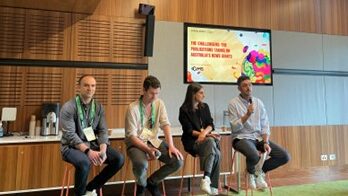SXSW Sydney: News market big enough for new players ‘as long as the journalism is good enough’
Speaking on their “challenger” status against a media duopoly during a SXSW Sydney panel on Thursday, indie media bosses from Capital Brief and The Daily Aus were confident of their place in a rich and varied media diet.
Just two months after soft launching Scire’s debut publication to the public in August, Capital Brief’s chief business officer and Scire co-founder David Eisman joined editor-in-chief John McDuling in a conversation with founders of youth media outlet The Daily Aus, Sam Koslowski and Zara Seidler.


